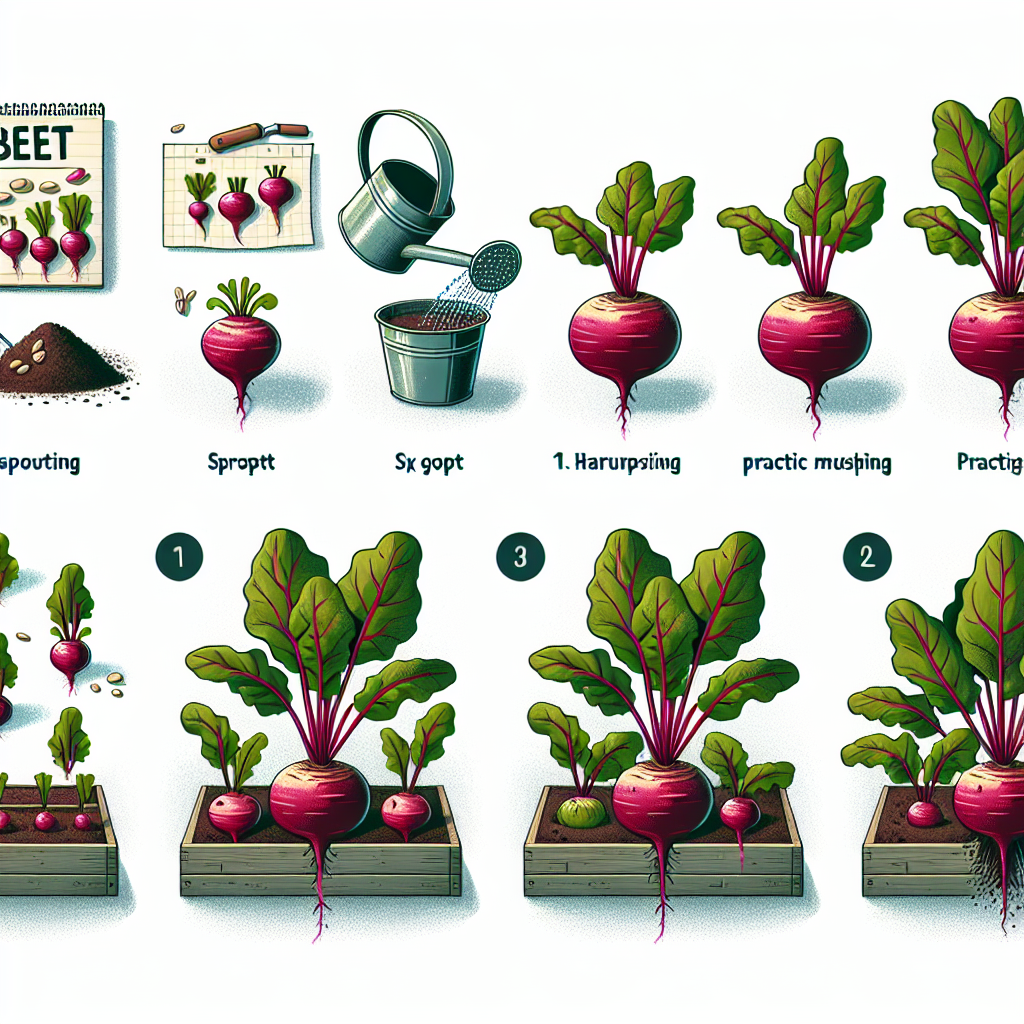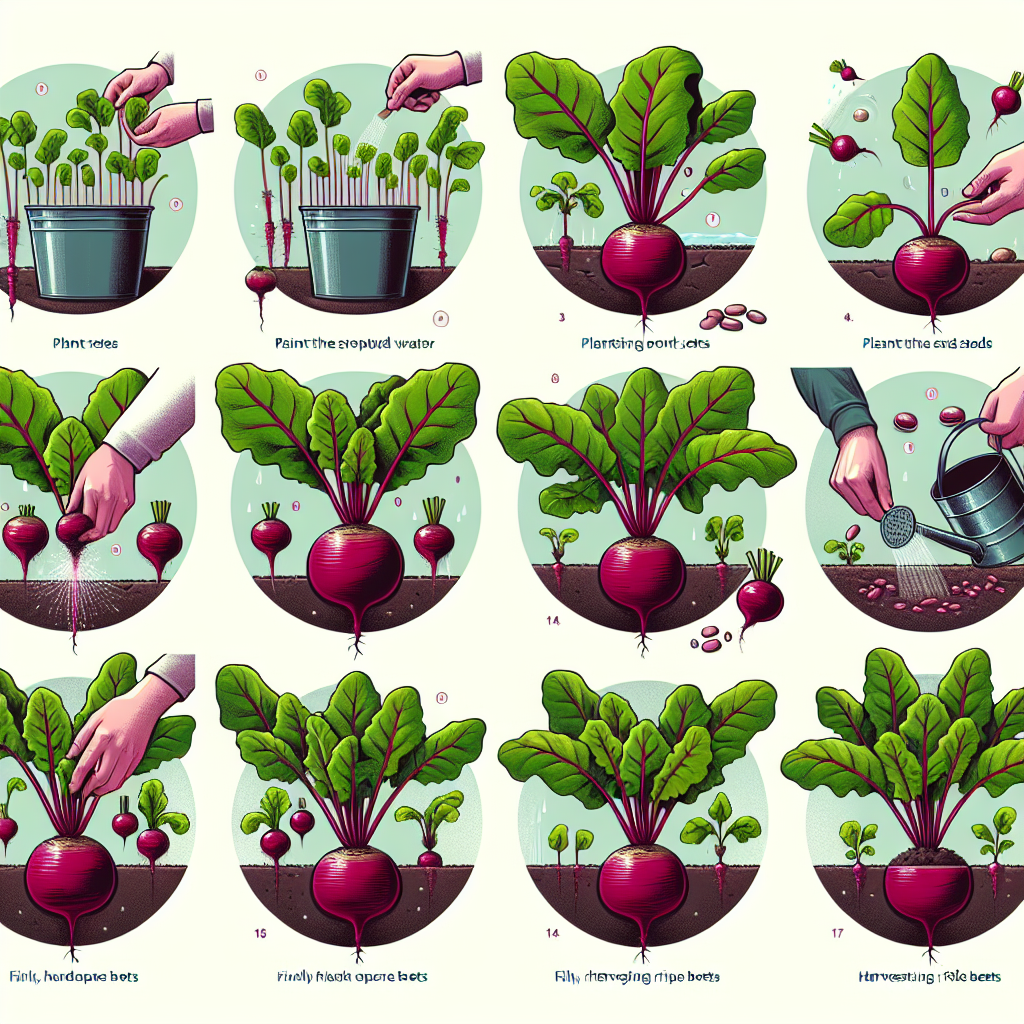A Guide to Successfully Growing Beets at Home
Are you looking to add a nutritious and versatile vegetable to your home garden? Look no further than beets! This root vegetable, with its vibrant color and earthy flavor, can be grown successfully at home, even if you are a beginner gardener. In this guide, we will walk you through everything you need to know in order to successfully grow beets in your own backyard.
Beet Varieties
Before we dive into the technical aspects of growing beets, let’s take a moment to explore the different varieties available. Beets come in various shapes, sizes, and colors. Some popular varieties include Detroit Dark Red, Golden Detriot, Chioggia, and Bull’s Blood. Each variety has its unique characteristics, so choose one that suits your preferences.
Soil Preparation
Beets thrive in well-draining soil that is rich in organic matter. Start by clearing the planting area of any weeds or debris. Loosen the soil using a garden fork or tiller to ensure proper aeration and drainage. Incorporate compost or well-rotted manure into the soil for added nutrients.
Planting Seeds
Since beets prefer cool weather, it is best to sow seeds directly into the ground approximately 2-4 weeks before the last frost date in your area. Plant seeds about half an inch deep and 1-2 inches apart, leaving enough space between rows for easy access when thinning later on.
Watering
Beet plants require consistent moisture throughout their growing season. Keep the soil moist but not waterlogged by watering deeply once or twice a week. Use a soaker hose or drip irrigation system rather than overhead watering to prevent foliar diseases.
Thinning Seedlings
When the seedlings reach 2-3 inches tall, thin them out by removing weaker plants so that there is about 3-4 inches between each beet plant. Thinning helps ensure proper airflow and prevents overcrowding, allowing each plant to grow to its full potential.

Weed Control
Weeds can compete with beets for nutrients and water, so it is essential to keep the garden bed weed-free. Regularly inspect the area and remove any weeds by hand or use a hoe for larger infestations. Applying a layer of organic mulch around the plants can also help suppress weed growth.
Fertilizing
Beets are not heavy feeders, but they benefit from a balanced fertilizer application. A slow-release granular fertilizer with an NPK ratio of 10-10-10 applied at planting time should provide sufficient nutrients for healthy growth. Avoid over-fertilizing, as this can lead to excessive foliage growth but smaller roots.
Pest and Disease Management
Fortunately, beets are relatively resistant to pests and diseases. However, some common issues include leaf miners, aphids, and fungal diseases like powdery mildew or downy mildew. Regularly inspect your plants for signs of infestation or disease, and take necessary steps such as applying organic insecticides or fungicides if needed.
Harvesting
Beets are typically ready for harvest 8-10 weeks after planting. The exact timing depends on the variety and growing conditions. To check if your beets are ready, gently dig around the base of a plant and assess the size of the root bulb. When they have reached their desired size (usually around 2-3 inches in diameter), carefully lift them out of the ground using a garden fork or spatula.
Storing Beets
After harvesting your beets, remove excess soil from the roots but avoid washing them as it can reduce their shelf life. Cut off the foliage close to the crown but leave about an inch intact to prevent bleeding during cooking. Store unwashed beets in a cool and dark place with high humidity such as a root cellar or refrigerator. They can last up to several months if stored properly.
In conclusion, growing beets at home is a rewarding experience that can provide you with fresh and nutritious produce throughout the growing season. By following this guide, you will be well-equipped to successfully cultivate beets in your own backyard. So, roll up your sleeves and get ready to enjoy the vibrant colors and delicious flavors of homegrown beets!













